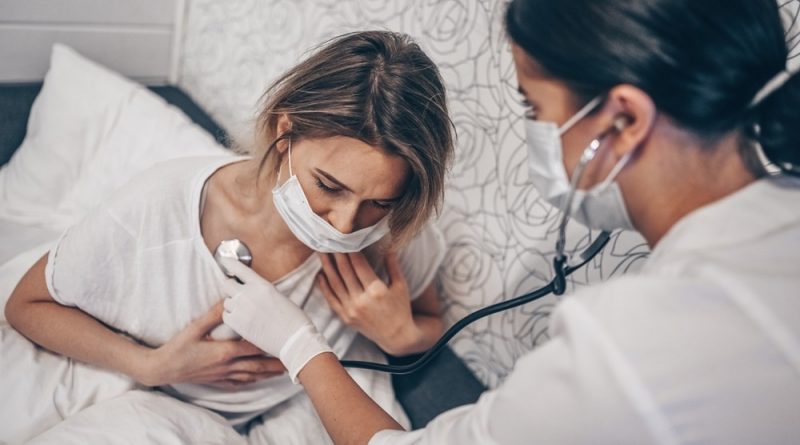Does COVID-19 pneumonia have a higher mortality rate than other causes of pneumonia?
A recent study published in JAMA Network Open evaluated outcomes in mechanically ventilated patients with pneumonia due to coronavirus disease 2019 (COVID-19) or other etiologies.

Background
Acute hypoxemic respiratory failure (AHRF) is one of the complications of severe acute respiratory syndrome coronavirus 2 (SARS-CoV-2) infection. COVID-19-induced respiratory failure was thought to exhibit a higher mortality and distinct physiologic phenotype than non-COVID-19 AHRF. This led some clinicians to propose the use of non-standard mechanical ventilation.
Proponents of COVID-19 AHRF as a unique physiological phenotype have suggested that low tidal volume ventilation may be unnecessary and harmful. Nevertheless, if COVID-19 pneumonia results in physiology typical of acute respiratory distress syndrome (ARDS), then prone positioning and low tidal volume ventilation remain the only proven interventions for mortality reduction.
About the study
The present study evaluated key outcomes in patients with pneumonia and AHRF due to COVID-19 or other etiologies. The research team included individuals aged 18 or older who were mechanically ventilated and had severe pneumonia and AHRF within two weeks of hospitalization due to COVID-19 or other etiologies.
The team used data on all patients meeting the specified criteria admitted to one of the five Johns Hopkins Healthcare System (JHHS) hospitals. COVID-19 patients were hospitalized from March 2020 to June 2021, while non-COVID-19 patients were hospitalized with a recorded diagnosis of pneumonia between July 2016 and December 2019.
Patients with tracheostomy at admission and those with ventilator-related pneumonia were excluded. The researchers extracted data on baseline demographics, comorbidities, vital signs, respiratory flowsheet parameters, and laboratory findings. The team computed the sequential organ failure assessment (SOFA) and CURB-65 (confusion, urea, respiratory rate, blood pressure, and age 65 or above) scores on the day of mechanical ventilation.
Respiratory parameters of interest were the fraction of inspired oxygen (FiO2), oxygen delivery devices, and mechanical ventilation parameters (mode, plateau pressure, set tidal volume (VT), positive end-expiratory pressure (PEEP), and total respiratory rate). The study’s primary outcome was in-hospital death within 90 days.
Secondary outcomes included mechanical ventilation parameters in the first week, duration, and time to discharge. Physiological outcomes were the ventilatory ratio in the first week and respiratory system compliance. Differences in the primary and secondary outcomes were compared between COVID-19 and non-COVID-19 cohorts.
Findings
The research team identified 719 COVID-19 and 1127 non-COVID-19 patients with pneumonia who required mechanical ventilation. Most COVID-19 patients were males (61%) and from minoritized racial groups (64%). Most non-COVID-19 patients were males (52%) and White (58.1%). No secular trends were observed in PEEP, set VT, and plateau pressure during 2016-19.
Before, COVID-19 patients were more likely male, diabetic, from a minoritized racial group, and had a higher body mass index (BMI), lower SOFA score, and lower mean ratio of partial pressure of oxygen (PaO2) to FiO2 (P/F ratio). COVID-19 patients were intubated for an average of 4.1 days compared to 3.4 days for those from the non-COVID-19 cohort.
Further, patients in the COVID-19 cohort had fewer ventilation-free days and longer hospitalization and were more likely to die in the hospital than in the non-COVID-19 cohort. After propensity-score matching, COVID-19 patients were more likely to have chronic kidney disease, immunosuppression, and diabetes and less likely to be a smoker or have chronic obstructive pulmonary disease (COPD).
Moreover, COVID-19 patients were more likely to be treated with a high-flow nasal cannula and less likely to be treated with non-invasive mechanical ventilation. In univariable analysis, COVID-19 patients were 21% more likely to die and less likely to be discharged alive.
However, in multivariable analysis, COVID-19 patients were equally likely to die as non-COVID-19 patients and slightly less likely to be discharged alive. In the first seven days of mechanical ventilation, patients in the COVID-19 cohort were managed with a lower VT and higher PEEP relative to those in the non-COVID-19 cohort; they also had higher plateau pressure, lower ventilatory ratio, and respiratory system compliance.
Conclusions
The researchers observed similar mortality and longer ventilation periods among COVID-19 patients with pneumonia relative to non-COVID-19 patients. There were no clinically significant differences in the respiratory physiology between cohorts. Notably, patients from only one healthcare system were evaluated, limiting the generalizability of the findings.
The findings indicated a similar mortality rate between mechanically ventilated patients due to COVID-19 pneumonia and those with pneumonia of other etiologies, and there was no evidence of different physiological phenotypes between cohorts.
- Nolley, E. et al. (2023) "Outcomes Among Mechanically Ventilated Patients With Severe Pneumonia and Acute Hypoxemic Respiratory Failure From SARS-CoV-2 and Other Etiologies", JAMA Network Open, 6(1), p. e2250401. doi: 10.1001/jamanetworkopen.2022.50401.
Posted in: Medical Science News | Medical Research News | Disease/Infection News
Tags: Acute Respiratory Distress Syndrome, Blood, Blood Pressure, Body Mass Index, Chronic, Chronic Kidney Disease, Chronic Obstructive Pulmonary Disease, Coronavirus, Coronavirus Disease COVID-19, covid-19, Diabetes, Healthcare, Hospital, Immunosuppression, Kidney, Kidney Disease, Laboratory, Mortality, Oxygen, Phenotype, Physiology, Pneumonia, Research, Respiratory, SARS, SARS-CoV-2, Severe Acute Respiratory, Severe Acute Respiratory Syndrome, Syndrome, Tracheostomy, Ventilator

Written by
Tarun Sai Lomte
Tarun is a writer based in Hyderabad, India. He has a Master’s degree in Biotechnology from the University of Hyderabad and is enthusiastic about scientific research. He enjoys reading research papers and literature reviews and is passionate about writing.
Source: Read Full Article
